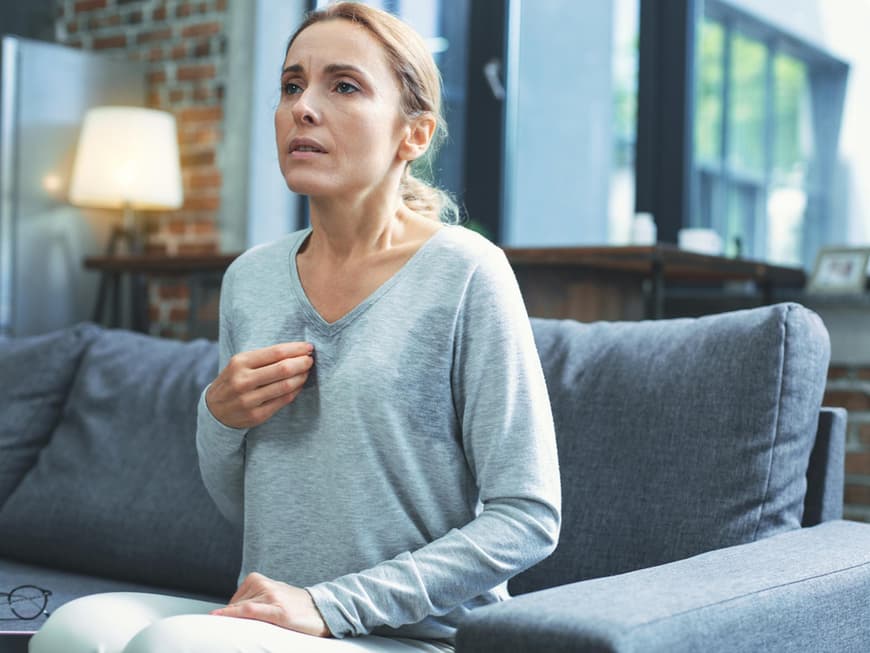
- What exactly is the menopause?
- How do you notice your menopause?
- Why do some women start the menopause at the age of 40?
- How can a doctor make a diagnosis and what does the treatment look like?
What exactly is the menopause?
The menopause, or climacteric, is the transition between a woman's reproductive age and the decline in the important functions of the female reproductive organs. These functions are mainly the production of the hormones oestrogen and progesterone in the ovaries. The menopause is the time of the last menstrual period; the premenopause is the period between the first irregular periods and the menopause. Normally, the processes that lead to the onset of the menopause occur in the mid to late 40s. However, if the menopause occurs at the age of 40 or earlier, this is known in medicine as climacterium praecox.
How do you notice your menopause?
Whether your menopause occurs at 40 or later, the symptoms that women suffer from to varying degrees are often very similar. The typical sweats are characteristic and probably familiar to most. Women also frequently complain of dizziness and headaches, which can occur in the course of hormonal changes. Another point worth mentioning is the psychological changes that occur due to the hormone deficiency. This often results in disturbed sleep at night, which can lead to exhaustion and tiredness during the day. Menopausal women also often report feeling more irritable and restless. The general mood of affected women is very changeable and can lead to depressive symptoms with listlessness. Oestrogen deficiency can also affect sex life, as it can lead to vaginal dryness. The hormonal changes can be very unpleasant for menopausal women in their 40s, but also at an older age. However, many symptoms can often be easily remedied with home remedies. Medication rarely needs to be prescribed.
Why do some women start the menopause at 40?
There are many reasons why some women start the menopause at the age of 40. On the one hand, this early onset can be a sign of genetic diseases that cause changes to a woman's internal reproductive organs. However, this reason for the menopause at 40 is rather rare and the respective diseases usually become apparent earlier, for example because menstruation does not start in adolescence. Another, far more common reason for an early menopause at 40 is that the follicles, i.e. the structures in the ovaries that contain the eggs, have already perished or been used up prematurely. This is due to the fact that the egg cells were already created when a woman was a child and can no longer be reproduced in the course of her life. This phenomenon can be exacerbated by medical treatments such as radiotherapy or chemotherapy for cancer, or other diseases such as rheumatoid arthritis or diabetes mellitus, so that the menopause occurs at the age of 40.
How can a doctor make the diagnosis and what is the treatment?
If you recognize the symptoms in yourself and describe them to your doctor, he or she can confirm the suspicion through hormone diagnostics. To do this, your blood will be taken and the levels of follicle-stimulating hormone (FSH), luteinizing hormone (LH), oestrogen and progesterone will be determined. If high FSH and LH levels and low oestrogen and progesterone levels indicate that you have started the menopause, you can start treatment. However, this is by no means compulsory.
If you are suffering from severe symptoms or have already started the menopause at the age of 40, your doctor can treat you with the missing hormones oestrogen and progesterone. However, this hormone therapy carries an increased risk of developing breast cancer later on. Traditional Chinese medicine with cupping is therefore an alternative here, as is naturopathy with cimicifuga rhizomes, which have a similar effect on the body to oestrogen, and mud baths. Many women also swear by homeopathy or herbal preparations. Ultimately, however, only you can decide what helps you best. In any case, the menopause at 40 doesn't have to be unpleasant.
You might also be interested in this:
